Bubble devices versus other pressure sources for nasal continuous positive airway pressure in preterm infants
- PMID: 37009665
- PMCID: PMC10064833
- DOI: 10.1002/14651858.CD015130
Bubble devices versus other pressure sources for nasal continuous positive airway pressure in preterm infants
Abstract
Background: Several types of pressure sources, including underwater bubble devices, mechanical ventilators, and the Infant Flow Driver, are used for providing continuous positive airway pressure (CPAP) to preterm infants with respiratory distress. It is unclear whether the use of bubble CPAP versus other pressure sources is associated with lower rates of CPAP treatment failure, or mortality and other morbidity. OBJECTIVES: To assess the benefits and harms of bubble CPAP versus other pressure sources (mechanical ventilators or Infant Flow Driver) for reducing treatment failure and associated morbidity and mortality in newborn preterm infants with or at risk of respiratory distress.
Search methods: We searched the Cochrane Central Register of Controlled Trials (CENTRAL; 2023, Issue 1); MEDLINE (1946 to 6 January 2023), Embase (1974 to 6 January 2023), Maternity & Infant Care Database (1971 to 6 January 2023), and the Cumulative Index to Nursing and Allied Health Literature (1982 to 6 January 2023). We searched clinical trials databases and the reference lists of retrieved articles.
Selection criteria: We included randomised controlled trials comparing bubble CPAP with other pressure sources (mechanical ventilators or Infant Flow Driver) for the delivery of nasal CPAP to preterm infants.
Data collection and analysis: We used standard Cochrane methods. Two review authors separately evaluated trial quality, extracted data, and synthesised effect estimates using risk ratio (RR), risk difference (RD), and mean difference. We used the GRADE approach to assess the certainty of the evidence for effects on treatment failure, all-cause mortality, neurodevelopmental impairment, pneumothorax, moderate-severe nasal trauma, and bronchopulmonary dysplasia.
Main results: We included 15 trials involving a total of 1437 infants. All trials were small (median number of participants 88). The methods used to generate the randomisation sequence and ensure allocation concealment were unclear in about half of the trial reports. Lack of measures to blind caregivers or investigators was a potential source of bias in all of the included trials. The trials took place during the past 25 years in care facilities internationally, predominantly in India (five trials) and Iran (four trials). The studied pressure sources were commercially available bubble CPAP devices versus a variety of mechanical ventilator (11 trials) or Infant Flow Driver (4 trials) devices. Meta-analyses suggest that the use of bubble CPAP compared with mechanical ventilator or Infant Flow Driver CPAP may reduce the rate of treatment failure (RR 0.76, 95% confidence interval (CI) 0.60 to 0.95; (I² = 31%); RD -0.05, 95% CI -0.10 to -0.01; number needed to treat for an additional beneficial outcome 20, 95% CI 10 to 100; 13 trials, 1230 infants; low certainty evidence). The type of pressure source may not affect mortality prior to hospital discharge (RR 0.93, 95% CI 0.64 to 1.36 (I² = 0%); RD -0.01, 95% CI -0.04 to 0.02; 10 trials, 1189 infants; low certainty evidence). No data were available on neurodevelopmental impairment. Meta-analysis suggests that the pressure source may not affect the risk of pneumothorax (RR 0.73, 95% CI 0.40 to 1.34 (I² = 0%); RD -0.01, 95% CI -0.03 to 0.01; 14 trials, 1340 infants; low certainty evidence). Bubble CPAP likely increases the risk of moderate-severe nasal injury (RR 2.29, 95% CI 1.37 to 3.82 (I² = 17%); RD 0.07, 95% CI 0.03 to 0.11; number needed to treat for an additional harmful outcome 14, 95% CI 9 to 33; 8 trials, 753 infants; moderate certainty evidence). The pressure source may not affect the risk of bronchopulmonary dysplasia (RR 0.76, 95% CI 0.53 to 1.10 (I² = 0%); RD -0.04, 95% CI -0.09 to 0.01; 7 trials, 603 infants; low certainty evidence). AUTHORS' CONCLUSIONS: Given the low level of certainty about the effects of bubble CPAP versus other pressure sources on the risk of treatment failure and most associated morbidity and mortality for preterm infants, further large, high-quality trials are needed to provide evidence of sufficient validity and applicability to inform context- and setting-relevant policy and practice.
Copyright © 2023 The Cochrane Collaboration. Published by John Wiley & Sons, Ltd.
Conflict of interest statement
RP has no interests to declare.
ADP has no interests to declare.
PD has no interests to declare.
SO has no interests to declare.
WM is Co‐coordinating Editor of Cochrane Neonatal but was not involved in the editorial acceptance or processes for this review.
Figures


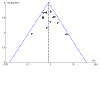
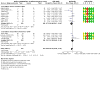

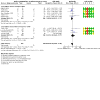
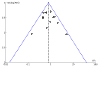
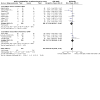
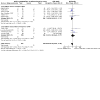
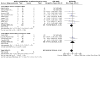
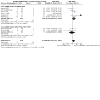
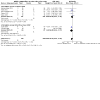
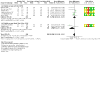

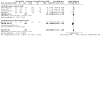
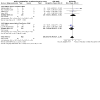
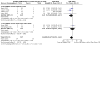
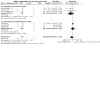
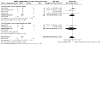
References
References to studies included in this review
Agarwal 2016 {published data only}
Bahman‐Bijari 2011 {published data only}
Bhatti 2015 {published data only}
-
- Khan J, Sundaram V, Murki S, Bhatti A, Saini SS, Kumar P. Nasal injury and comfort with jet versus bubble continuous positive airway pressure delivery systems in preterm infants with respiratory distress. European Journal of Pediatrics 2017;176(12):1629-35. [DOI: 10.1007/s00431-017-3016-7] - DOI - PubMed
Gupta 2009 {published data only}
-
- Gupta S, Sinha SK, Tin W, Donn SM. A randomized controlled trial of post-extubation bubble continuous positive airway pressure versus Infant Flow Driver continuous positive airway pressure in preterm infants with respiratory distress syndrome. Journal of Pediatrics 2009;154(5):645-50. [DOI: 10.1016/j.jpeds.2008.12.034] - DOI - PubMed
Hosseini 2012 {published data only}
-
- Hosseini MB, Heidarzadeh M, Balila M, Ghojazadeh M, Janani R, Safavi-nia S, et al. Randomized controlled trial of two methods of nasal continuous positive airway pressure (N-CPAP) in preterm infants with respiratory distress syndrome: underwater bubbly CPAP vs. Medijet system device. The Turkish Journal of Pediatrics 2012;54(6):632-40. [PMID: ] - PubMed
Jazexhiu‐Postoli 2015 {published data only}
-
- Jazexhiu-Postoli E, Vevecka E, Petrela E, Tushe E. Results of the treatment with two different nasal continuous positive airway pressure systems in preterm newborns with respiratory distress syndrome. The Albanian Journal of Medical and Health Sciences 2015;46(2):29-35.
-
- Jazexhiu-Postoli E, Vevecka E, Rapushi E, Petrela E, Tushe E. Can we predict CPAP failure in preterms with respiratory distress syndrome? In: The Albanian Journal of Natural Technical Sciences. Vol. 19. 2014.
Mazmanyan 2016 {published data only}
-
- Mazmanyan P, Mellor K, Doré CJ, Modi N. A randomised controlled trial of flow driver and bubble continuous positive airway pressure in preterm infants in a resource-limited setting. Archives of Disease in Childhood-Fetal and Neonatal Edition 2016;101(1):16-20. - PubMed
Mazzella 2001 {published data only}
-
- Mazzella M, Bellini C, Calevo MG, Campone F, Massocco D, Mezzano P, et al. A randomised control study comparing the Infant Flow Driver with nasal continuous positive airway pressure in preterm infants. Archives of Disease in Childhood Fetal- and Neonatal Edition 2001;85:F86-90. [DOI: 10.1136/fn.85.2.f86] - DOI - PMC - PubMed
Mohammadizadeh 2011 {published data only}
-
- Mohammadizadeh M, Asadi AR, Sadeghnia AR. Compare the effects of continuous positive airway pressure with two different methods to treat premature infants with respiratory distress syndrome. Journal of Isfahan Medical School. 2011 Sep 12;29(146). 2011;29(146):901-11.
Noori Shadkam 2017 {published data only}
-
- Noori Shadkam M, Movahedinia M, Noori Shadkam Z, Mehrparvar AH. Comparison of the therapeutic effects of bubble CPAP and ventilator CPAP on respiratory distress syndrome in premature neonates. Iranian Journal of Neonatology 2017;8(3):1-5.
Ribeiro 2017 {published and unpublished data}
Tagare 2010 {published data only}
Tagare 2013 {published data only}
Yadav 2012 {published data only}
-
- Yadav S, Thukral A, Sankar MJ, Sreenivas V, Deorari AK, Paul VK, et al. Bubble vs conventional continuous positive airway pressure for prevention of extubation failure in preterm very low birth weight infants: a pilot study. The Indian Journal of Pediatrics 2012;79(9):1163-8. [DOI: 10.1007/s12098-011-0651-2] - DOI - PubMed
References to studies excluded from this review
Ahluwalia 1998 {published data only}
-
- Ahluwalia JS, White DK, Morley CJ. Infant Flow Driver or single prong nasal continuous positive airway pressure: short-term physiological effects. Acta Paediatrica 1998;87:325-7. - PubMed
Backes 2020 {published data only}
Bhandari 1996 {published data only}
-
- Bhandari V, Rogerson S, Barfield C, Yu V, Rowe JC. Nasal versus naso-pharyngeal continuous positive airway pressure (CPAP) use in preterm neonates (abstract). Pediatric Research 1996;39 (Suppl):196A.
Buettiker 2004 {published data only}
-
- Buettiker V, Hug MI, Baenziger O, Meyer C, Frey B. Advantages and disadvantages of different nasal CPAP systems in newborns. Intensive Care Medicine 2004;30:926-30. - PubMed
Campbell 2006 {published data only}
-
- Campbell DM, Shah P, Shah V, Kelly E. High flow nasal cannula CPAP versus infant flow nasal CPAP in newly-extubated neonates < 1250 g (abstract). Pediatric Research 2004;56:472A.
Courtney 2001 {published data only}
-
- Courtney SE, Pyon KH, Saslow JG, Arnold GK, Pandit PB, Habib RH. Lung recruitment and breathing pattern during variable versus continuous flow nasal continuous positive airway pressure in premature infants: an evaluation of three devices. Pediatrics 2001;107:304-8. - PubMed
Davis 2001 {published and unpublished data}
-
- Davis P, Davies M, Faber B. A randomised controlled trial of two methods of delivering nasal continuous positive airway pressure after extubation to infants weighing less than 1000g: binasal (Hudson) versus single nasal prongs. Archives of Disease in Childhood Fetal Neonatal Ed 2000;85:F82-5. - PMC - PubMed
Diala 2022 {published data only}
Guerin 2016 {published data only}
-
- Guerin C, Bailey SM, Mally PV, Rojas M, Bhutada A, Rastogi S. Randomized control trial comparing physiologic effects in preterm infants during treatment with nasal continuous positive airway pressure (nCPAP) generated by bubble nCPAP and ventilator nCPAP: a pilot study. Journal of Perinatal Medicine 2016;44:655-61. [DOI: 10.1515/jpm-2015-0209] - DOI - PubMed
Jonsson 1998 {published data only}
-
- Jonsson B, Repfennig L, Eriksson M, Lagercrantz H. The Scandanavian mode of respiratory therapy: a physiologic study of the Infant Flow nasal CPAP (abstract). Pediatric Research 1998;43:178A.
Kavvadia 2000 {published data only}
-
- Kavvadia V, Greenough A, Dimitriou G. Effect on lung function of continuous positive airway pressure administered either by Infant Flow Driver or a single nasal prong. European Journal of Pediatrics 2000;159:289-92. - PubMed
Liptsen 2005 {published data only}
-
- Liptsen E, Aghai ZH, Pyon KH, Saslow JG, Nakhla T, Long J, et al. Work of breathing during nasal continuous positive airway pressure in preterm infants: a comparison of bubble vs variable-flow devices. Journal of Perinatology 2005;25:453-8. - PubMed
Massaro 2005 {published data only}
-
- Massaro AN, Abdel-Haq I, Aly H. Underwater seal "bubble CPAP" versus ventilator derived CPAP: does mode of delivery make a difference in clinical outcome? (abstract). E-PAS [www.pas-meeting.org/] 2005;57:2054.
Nair 2005 {published data only}
-
- Nair G, Karna P. Comparison of the effects of Vapotherm and nasal CPAP in respiratory distress in preterm infants (abstract). E-PAS [www.pas-meeting.org/] 2005;57:2054.
Narendran 2002 {published data only}
-
- Narendran V, Donovan EF, Hoath SB, Warner BB, Steichen JJ, Jobe AH. Comparison between early bubble CPAP and conventional CPAP in reducing the incidence of chronic lung disease (abstract). E-PAS [www.pas-meeting.org/] 2002;51:1960.
Pandit 2001 {published data only}
-
- Pandit PB, Courtney SE, Pyon KH, Saslow JG, Habib RH. Work of breathing during constant- and variable-flow nasal continuous positive airway pressure in preterm neonates. Pediatrics 2001;108:682-5. - PubMed
Pantalischka 2009 {published data only}
-
- Pantalitschka T, Sievers J, Urschitz MS, Herberts T, Reher C, Poets CF. Randomised crossover trial of four nasal respiratory support systems for apnoea of prematurity in very low birthweight infants. Archives of Disease in Childhood-Fetal and Neonatal Edition 2009;94(4):F245-8. [DOI: 10.1136/adc.2008.148981] - DOI - PubMed
Pelligra 2006 {published data only}
-
- Pelligra G, Abdellatif MA, Lee SK. Comparison of clinical outcomes between two modes of CPAP delivery: underwater "bubble" versus conventional ventilator-derived (abstract). E-PAS [www.pas-meeting.org/] 2006;59:475.
Rego 2002 {published data only}
-
- Rego MAC, Martinez FE. Comparison of two nasal prongs for application of continuous positive airway pressure in neonates. Pediatric Critical Care Medicine 2002;3:239-43. - PubMed
Roukema 1999a {published data only}
-
- Roukema H, O'Brien K, Nesbitt K, Zaw W. A randomized controlled trial of Infant Flow continuous positive airway pressure (CPAP) versus nasopharyngeal CPAP in the extubation of babies ≤ 1250g (abstract). Pediatric Research 1999;45:318A.
Roukema 1999b {published data only}
-
- Roukema H, O'Brien K, Nesbitt K, Zaw W. A crossover trial of Infant Flow continuous positive airway pressure versus nasopharyngeal CPAP in the extubation of babies ≤ 1250 grams birthweight (abstract). Pediatric Research 1999;45:317A.
Stefanescu 2003 {published data only}
-
- Stefanescu BM, Murphy WP, Hansell BJ, Fuloria M, Morgan TM, Aschner JL. A randomized, controlled trial comparing two different continuous positive airway pressure systems for the successful extubation of extremely low birth weight infants. Pediatrics 2003;112:1031-8. - PubMed
Sun 1999 {published and unpublished data}
-
- Sun SC, Tien HC. Randomized controlled trial of two methods of nasal CPAP (NCPAP): Flow Driver vs conventional NCPAP (abstract). Pediatric Research 1999;45:322A.
Tayler 2022 {published data only}
Telenko 1999 {published data only}
-
- Telenko T, Peliowski A, Hudson-Mason A. Continuous positive airway pressure (CPAP) in the treatment of apnea of prematurity: a comparison of two CPAP delivery systems (abstract). Pediatric Research 1999;45:228A.
Trevisanuto 2005 {published data only}
-
- Trevisanuto D, Grazzina N, Doglioni N, Ferrarese P, Marzari F, Zanardo V. A new device for administration of continuous positive airway pressure in preterm infants: comparison with a standard nasal CPAP continuous positive airway pressure system. Intensive Care Medicine 2005;31:859-64. - PubMed
References to studies awaiting assessment
Colaizy 2004 {published data only}
-
- Colaizy TT, McEvoy C, Crichton C, Freitag BC, Gilhooly J, Pillers DM, Smith SA, Wallen L. Bubble vs. conventional CPAP: a prospective, randomized, pilot study (abstract). Pediatric Academic Societies [www.pas-meeting.org/] 2004;55:2646.
Additional references
Abdel‐Latif 2021
-
- Abdel-Latif ME, Davis PG, Wheeler KI, De Paoli AG, Dargaville PA. Surfactant therapy via thin catheter in preterm infants with or at risk of respiratory distress syndrome. Cochrane Database of Systematic Reviews 2021, Issue 5. Art. No: CD011672. [DOI: 10.1002/14651858.CD011672.pub2] - DOI - PMC - PubMed
Baldursdottir 2020
-
- Baldursdottir S, Falk M, Donaldsson S, Jonsson B, Drevhammar T. Basic principles of neonatal bubble CPAP: effects on CPAP delivery and imposed work of breathing when altering the original design. Arch Dis Child Fetal & Neonatal Edition 2020;105(5):550-554. [DOI: 10.1136/archdischild-2019-318073] - DOI - PMC - PubMed
Bamat 2021
-
- Bamat N, Fierro J, Mukerji A, Wright CJ, Millar D, Kirpalani H. Nasal continuous positive airway pressure levels for the prevention of morbidity and mortality in preterm infants. Cochrane Database of Systematic Reviews 2021, Issue 12. Art. No: CD012778. [CENTRAL: CD012778] [DOI: 10.1002/14651858.CD012778.pub2] - DOI - PMC - PubMed
Bell 1978
Beltempo 2018
Bharadwaj 2020
-
- Bharadwaj SK, Alonazi A, Banfield L, Dutta S, Mukerji A. Bubble versus other continuous positive airway pressure forms: a systematic review and meta-analysis. Archives of Disease in Childhood - Fetal and Neonatal Edition 2020;105:F526-531. [DOI: ] - PubMed
Committee on Fetus and Newborn 2014
-
- Committee on Fetus and Newborn. Respiratory support in preterm infants at birth. Pediatrics 2014;133(1):171-4. - PubMed
Curstedt 2015
Dargaville 2013
-
- Dargaville PA, Aiyappan A, De Paoli AG, Dalton RG, Kuschel CA, Kamlin CO, et al. Continuous positive airway pressure failure in preterm infants: incidence, predictors and consequences. Neonatology 2013;104(1):8-14. - PubMed
Dargaville 2016
Davis 2003
De Paoli 2005
De Paoli 2021
-
- De Paoli A, Prakash R, Oddie S, Davies P, McGuire W. Masks versus prongs as interfaces for nasal continuous positive airway pressure in preterm infants. Cochrane Database of Systematic Reviews 2021, Issue 12. Art. No: CD002977. [CENTRAL: CD002977] [DOI: 10.1002/14651858.CD002977.pub2] - DOI - PMC - PubMed
Ehrenkranz 2005
-
- Ehrenkranz RA, Walsh MC, Vohr BR, Jobe AH, Wright LL, Fanaroff AA, et al, National Institutes of Child Health and Human Development Neonatal Research Network. Validation of the National Institutes of Health consensus definition of bronchopulmonary dysplasia. Pediatrics 2005;116(6):1353-60. [DOI: 10.1542/peds.2005-0249] [PMID: ] - DOI - PubMed
Ekhaguere 2019
Ettinger 2021
Fraser 2004
Gale 2020
Gaon 1999
Glaser 2021
GRADEpro GDT [Computer program]
-
- GRADEpro GDT. Version accessed 22 April 2022. Hamilton (ON): McMaster University (developed by Evidence Prime). Available at gradepro.org.
Green 2019
Gregory 1971
-
- Gregory GA, Kitterman JA, Phibbs RH, Tooley WH, Hamilton WK. Treatment of the idiopathic respiratory-distress syndrome with continuous positive airway pressure. New England Journal of Medicine 1971;284:1333-40. - PubMed
Gupta 2016
-
- Gupta S, Donn SM. Continuous positive airway pressure: physiology and comparison of devices. Seminars in Fetal and Neonatal Medicine 2016;21(3):204-11. - PubMed
Gupta 2016a
Harbord 2006
Higgins 2011
-
- Higgins JP, Green S, editor(s). Cochrane Handbook for Systematic Reviews of Interventions Version 5.1.0 (updated March 2011). The Cochrane Collaboration, 2011. Available from training.cochrane.org/handbook/archive/v5.1/.
Higgins 2020
-
- Higgins JP, Thomas J, Chandler J, Cumpston M, Li T, Page MJ, et al (editors). Cochrane Handbook for Systematic Reviews of Interventions version 6.1 (updated September 2020). Cochrane, 2020. Available from training.cochrane.org/handbook/archive/v6.1.
Ho 2020
Hopewell 2009
Horbar 2012
ICROP 2005
Imbulana 2018
Jobe 2001
-
- Jobe AH, Bancalari E. Bronchopulmonary dysplasia. American Journal of Respiratory and Critical Care Medicine 2001;163(7):1723-9. [PMID: ] - PubMed
Kamper 1990
-
- Kamper J, Ringsted C. Early treatment of idiopathic respiratory distress syndrome using binasal continuous positive airway pressure. Acta Paediatrica Scandinavica 1990;79:581-6. - PubMed
Kinshella 2020
Krouskop 1975
-
- Krouskop RW, Brown EG, Sweet AY. The early use of continuous positive airway pressure in the treatment of idiopathic respiratory distress syndrome. Journal of Pediatrics 1975;87:263-7. - PubMed
Laughton 2011
Lee 1998
-
- Lee KS, Dunn MS, Fenwick M, Shennan AT. A comparison of underwater bubble continuous positive airway pressure with ventilator-derived continuous positive airway pressure in premature neonates ready for extubation. Biology of the Neonate 1998;73:69-75. - PubMed
Lemyre 2016
-
- Lemyre B, Laughon M, Bose C, Davis PG. Early nasal intermittent positive pressure ventilation (NIPPV) versus early nasal continuous positive airway pressure (NCPAP) for preterm infants. Cochrane Database of Systematic Reviews 2016, Issue 12. Art. No: CD005384. [DOI: 10.1002/14651858.CD005384.pub2] - DOI - PMC - PubMed
Lemyre 2017
-
- Lemyre B, Davis PG, De Paoli AG, Kirpalani H. Nasal intermittent positive pressure ventilation (NIPPV) versus nasal continuous positive airway pressure (NCPAP) for preterm neonates after extubation. Cochrane Database of Systematic Reviews 2017, Issue 2. Art. No: CD003212. [DOI: 10.1002/14651858.CD003212.pub3] - DOI - PMC - PubMed
Lissauer 2017
Martin 1977
-
- Martin RJ, Nearman HS, Katona PG, Klaus MH. The effect of a low continuous positive airway pressure on the reflex control of respiration in the preterm infant. Journal of Pediatrics 1977;90:976-81. - PubMed
McGoldrick 2020
-
- McGoldrick E, Stewart F, Parker R, Dalziel SR. Antenatal corticosteroids for accelerating fetal lung maturation for women at risk of preterm birth 10.1002/14651858.CD004454.pub4. Cochrane Database of Systematic Reviews 2020, Issue 12. Art. No: CD004454. [DOI: 10.1002/14651858.CD004454.pub4] - DOI - PMC - PubMed
Miller 1985
-
- Miller MJ, Carlo WA, Martin RJ. Continuous positive airway pressure selectively reduces obstructive apnea in preterm infants. Journal of Pediatrics 1985;106:91-4. - PubMed
Moa 1993
-
- Moa G, Nilsson K. Nasal continuous positive airway pressure: experiences with a new technical approach. Acta paediatrica 1993;82(2):210-211. - PubMed
Moa 1998
-
- Moa GU, Nilsson KJ, Zetterström H, Jonsson LO. A new device for administration of nasal continuous positive airway pressure in the newborn: an experimental study. Critical Care Medicine 1988;16(12):1238-42. - PubMed
Morley 2005
Mukerji 2017
Papile 1978
-
- Papile LA, Burstein J, Burstein R, Koffler H. Incidence and evolution of subependymal and intraventricular hemorrhage: a study of infants with birth weights less than 1,500 gm. Journal of Pediatrics 1978;92(4):529-34. [PMID: ] - PubMed
Pillow 2007
-
- Pillow JJ, Hillman N, Moss TJ, Polglase G, Bold G, Beaumont C, Ikegami M, Jobe AH. Bubble continuous positive airway pressure enhances lung volume and gas exchange in preterm lambs. American Journal of Respiratory and Critical Care Medicine 2007;176(1):63-9. [DOI: 10.1164/rccm.200609-1368OC] - DOI - PMC - PubMed
Pillow 2012
Richardson 1978
-
- Richardson CP, Jung AL. Effects of continuous positive airway pressure on pulmonary function and blood gases of infants with respiratory distress syndrome. Pediatric Research 1978;12:771-4. - PubMed
Schünemann 2013
-
- Schünemann H, Brożek J, Guyatt G, Oxman A, editor(s). Handbook for grading the quality of evidence and the strength of recommendations using the GRADE approach (updated October 2013). GRADE Working Group, 2013. Available from gdt.guidelinedevelopment.org/app/handbook/handbook.html.
Soll 2019
Stoll 2015
Subramaniam 2016
Sweet 2019
Thukral 2016
Vinekar 2019
Walsh 2021
Welty 2016
WHO 2016
-
- World Health Organization (WHO). Oxygen therapy for children: a manual for health workers. World Health Organization (Geneva) 2016:https://apps.who.int/iris/handle/10665/204584.
Wilkinson 2016
Won 2019
World Bank 2021
-
- World Bank. World Bank County and Lending Groups. datahelpdesk.worldbank.org/knowledgebase/articles/906519-world-bank-coun... (accessed 4 May 2021).
Wright 2016
-
- Wright CJ, Polin RA, Kirpalani H. Continuous positive airway pressure to prevent neonatal lung injury: how did we get here, and how do we improve? Journal of Pediatrics 2016;173:17–e2. - PubMed
Youngquist 2013
Yu 1977
-
- Yu VYH, Rolfe P. Effect of continuous positive airway pressure breathing on cardiorespiratory function in infants with respiratory distress syndrome. Acta Paediatrica Scandinavica 1977;66:59-64. - PubMed
References to other published versions of this review
De Paoli 2002
De Paoli 2008
Publication types
MeSH terms
LinkOut - more resources
Full Text Sources
Medical
Miscellaneous

